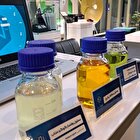Iran-Made Smart Skin-Like Dressings Treat Diabetic Wounds, Burns

The company’s special smart dressings for diabetic, burn, and surgical wounds have reached the production stage. The dressing enjoys a structure similar to natural skin, and with this innovation, patients can experience more effective treatment at a lower cost.
The company’s products include nanofiber dressings for diabetic wounds, nanofiber dressings for 2nd and 3rd degree burns, and nanofiber dressings for surgical wounds, which are offered with unique features like simulating the fibrous structure of natural skin, high epithelialization power, and competitive prices compared to imported samples.
The company's target market includes wound therapists, specialized wound clinics (diabetic, burn, and bed sore), beauty clinics, and patients with acute and chronic wounds.
In a relevant development in April, Iranian researchers at Amirkabir University of Technology had also succeeded in designing and manufacturing a two-layer wound dressing based on alginate hydrogel and silk fibroin nanofibers, which accelerates the healing process of chronic wounds by 30% and reduces the risk of infection by half.
“Silk fibroin nanofibers, with a structure similar to the body's extracellular matrix, promote cell growth and increase the strength of damaged tissue. The hydrogel is a combination of alginate, gelatin, polydopamine, and zinc ions, which is made by 3D printing and provides antiseptic properties and faster wound healing,” Mana Haji Mohammad Hossein Kashi, a graduate of Amirkabir University of Technology and a senior researcher of this project, told ANA.
Noting that the wound dressing has received approval from the US Food and Drug Administration (FDA) for similar products due to the use of natural and body-compatible materials, she said, “Silk fibroin is extracted from cocoon production factories in Iran and alginate is extracted from algae in the Sea of Oman (Chabahar region in Southeastern Iran).”
“This not only reduces production costs by 40%, but also positions Iran as a regional pioneer in tissue engineering technology,” Haji Mohammad Hossein Kashi said.
“In addition to treating diabetic wounds and burns, this dressing can be used in skin graft surgeries and inflammatory diseases,” she underlined.
4155/v





















